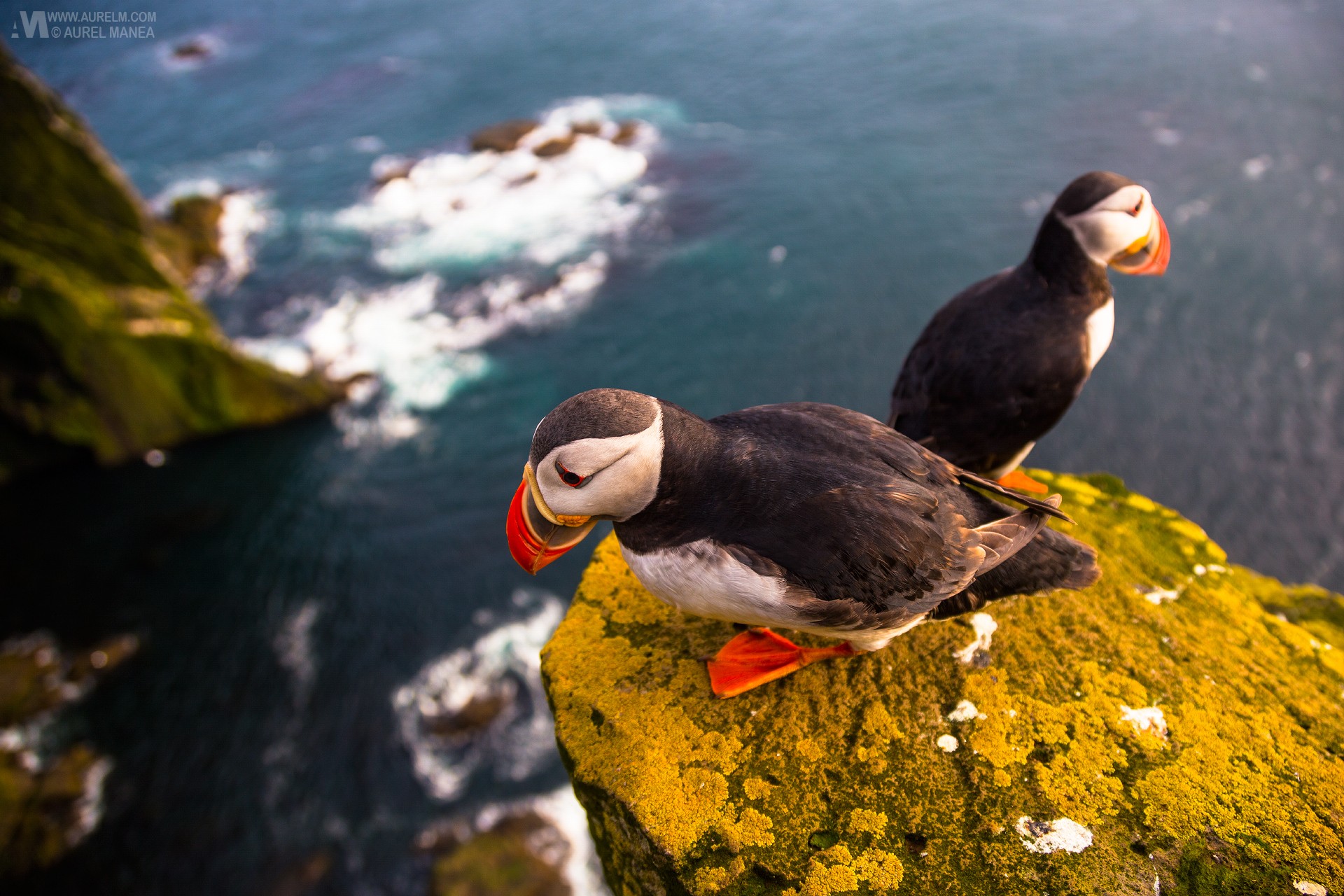

Researchers are also trying to establish new short-tailed albatross colonies on other Pacific islands, by translocating and hand-rearing chicks like Kress did in the 1970s. Japanese ornithologists have used decoys to encourage the birds to nest in an area that is less exposed to eruptions. This endangered seabird’s main breeding ground lies on the slope of an active volcano on an island in Japan. In the Pacific, conservationists are using Kress’s methods to help the short-tailed albatross. Decoys and sound recordings were used to lure the birds to safe nesting islands, where they are now breeding successfully.
#PUFFIN BIRD HOW TO#
In 2013, Kress and fellow conservationist Don Lyons advised researchers in China on how to use social attraction to help save the critically-endangered Chinese crested tern, a bird so rare it was presumed extinct. “Those techniques sort of give birds a little encouragement just to start the nucleus of a new colony,” says Kress.Īccording to Project Puffin, at least 42 seabird species in 14 countries have benefited from the colony restoration techniques developed by Kress and his team. Kress’s experiment with decoys on Eastern Egg Rock became the basis for a new method of bird conservation called social attraction, in which scientists use decoys, audio recordings, mirrors, scent, artificial burrows and fake eggs to simulate the presence of other members of the species. That’s when “I began trying to think like a puffin,” he says.īill Bridgeland, a Project Puffin research assistant, painting puffin decoys in 1977. The project’s supporters began to question whether they would ever succeed – but Kress was determined.

“They would come out when they were six weeks old and they would work their way to the edge of the island and swim off,” says Kress.įor four years, none of the birds returned to the island to breed. The team hand-reared puffins in artificial burrows, feeding them vitamin-enriched fish twice a day. The pufflings were transported by boat, motor vehicle, a small charter plane, another vehicle, another boat and then a rowboat to get ashore on Eastern Egg Rock. Starting in 1973, the team collected chicks from Great Island, off the coast of Newfoundland, Canada, which had a healthy puffin population. Getting the puffin chicks to the island was no easy task. He hoped they would return there to nest, after going out to sea. Kress had a theory that if the Project Puffin team could transplant puffin chicks – also known as pufflings – to Eastern Egg Rock and hand rear them, the birds would create a mental map of the island’s location.

It was home to a puffin colony before hunters arrived in the 19th century.
#PUFFIN BIRD FREE#
The tiny island, accessible only by rowboat, is ideal puffin habitat – free from predators and edged with granite boulders under which the puffins nest. Project Puffin’s origins lie on an uninhabited seven-acre island, six miles off the coast of Maine, called Eastern Egg Rock. What’s more, the techniques Kress developed to save puffins are now used by seabird conservationists around the world. Thanks to his pioneering methods, Project Puffin says there are now around 1,300 pairs of puffins nesting on islands in the Gulf of Maine. Kress ran the project while working for the National Audubon Society, a major bird conservation nonprofit in the United States. Kress’s fascination grew into Project Puffin, a decades-long effort to bring the puffin back to Maine. Kress decided to learn more about these “special birds.” Puffins can dive to depths of over 100 feet in the sea and fly through the air at 50 miles an hour, while on land they are adept at scampering over boulders and digging holes. Project Puffin founder Stephen Kress on his way to Eastern Egg Rock, where he's been working with puffins since 1973.


 0 kommentar(er)
0 kommentar(er)
